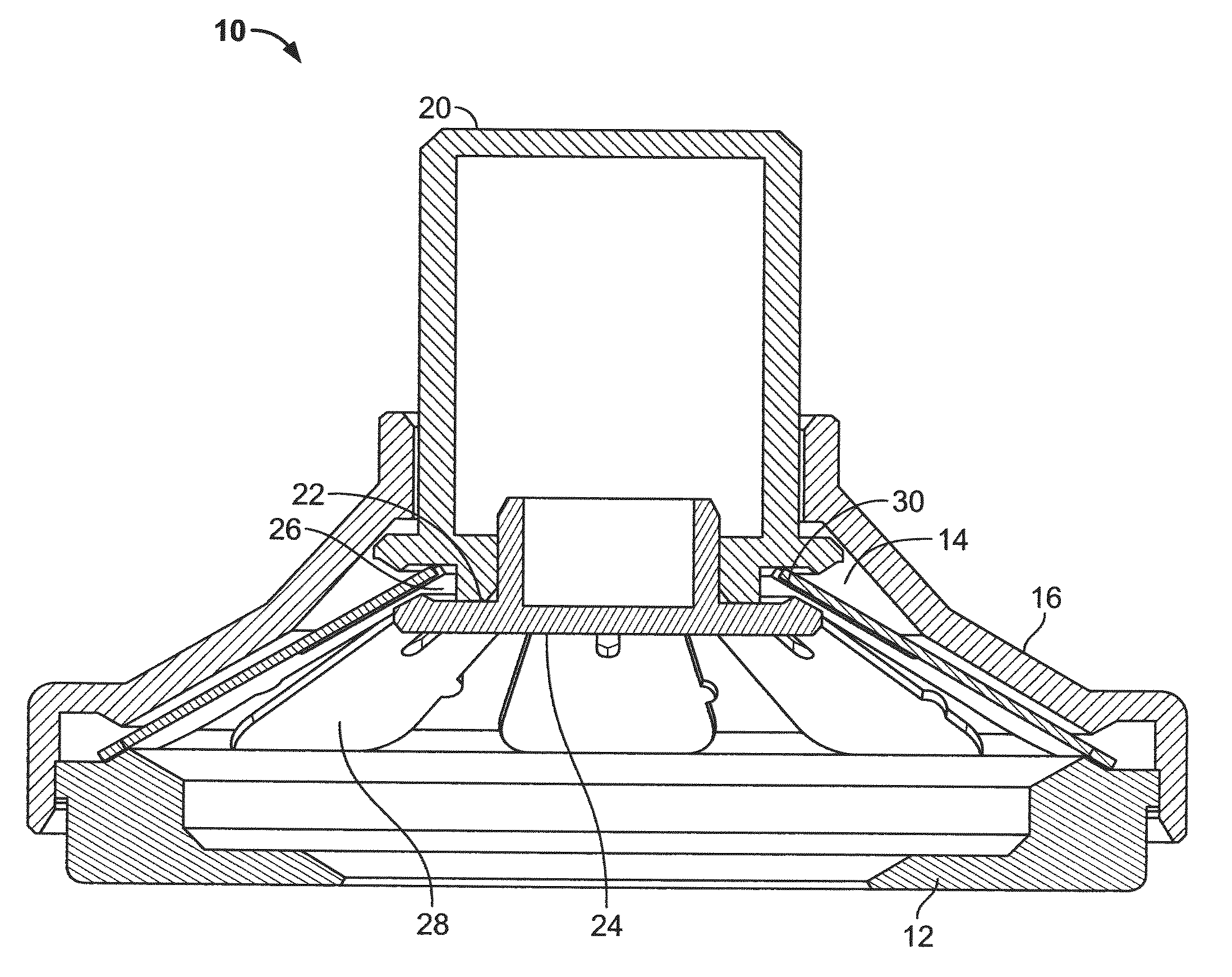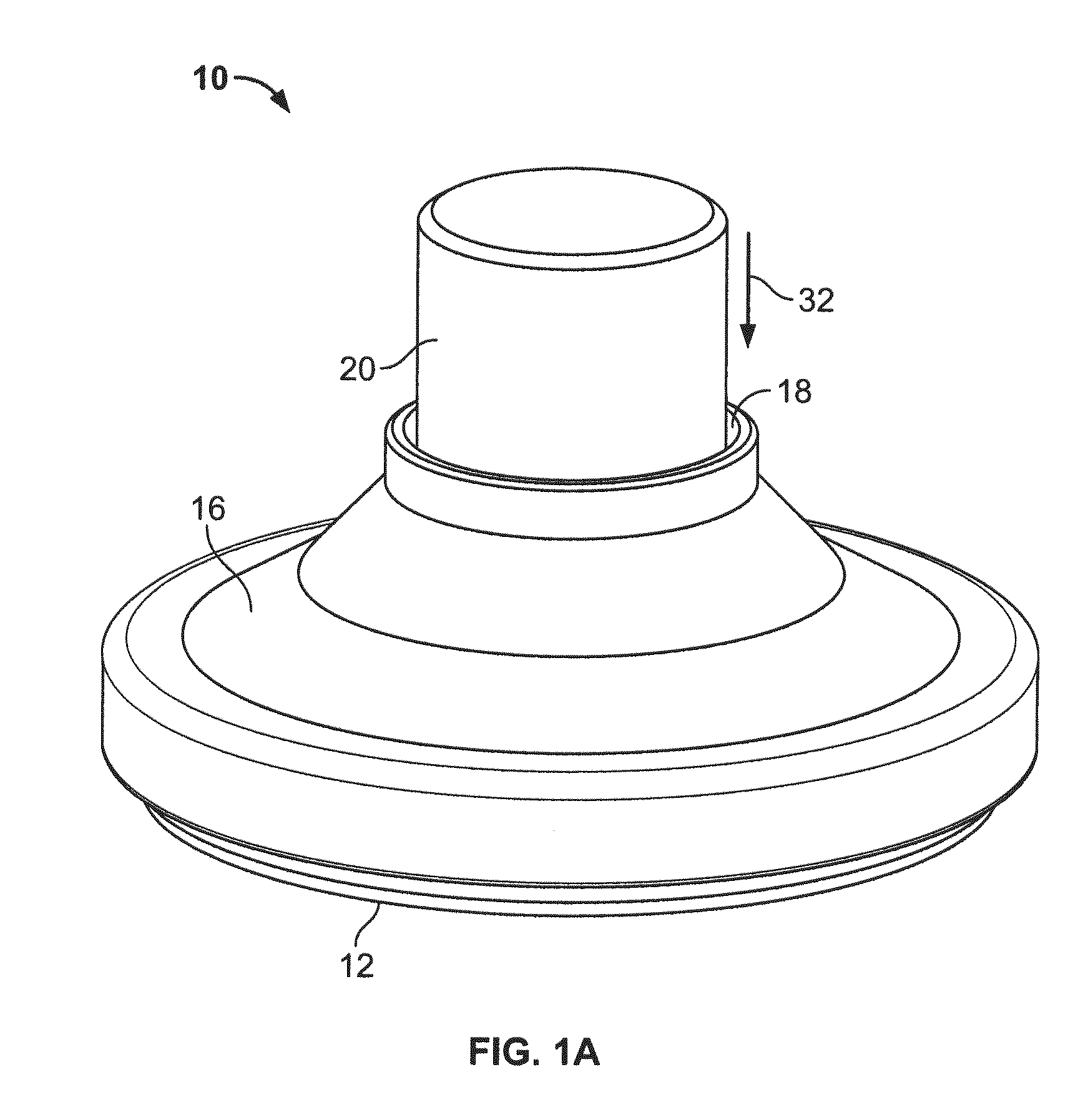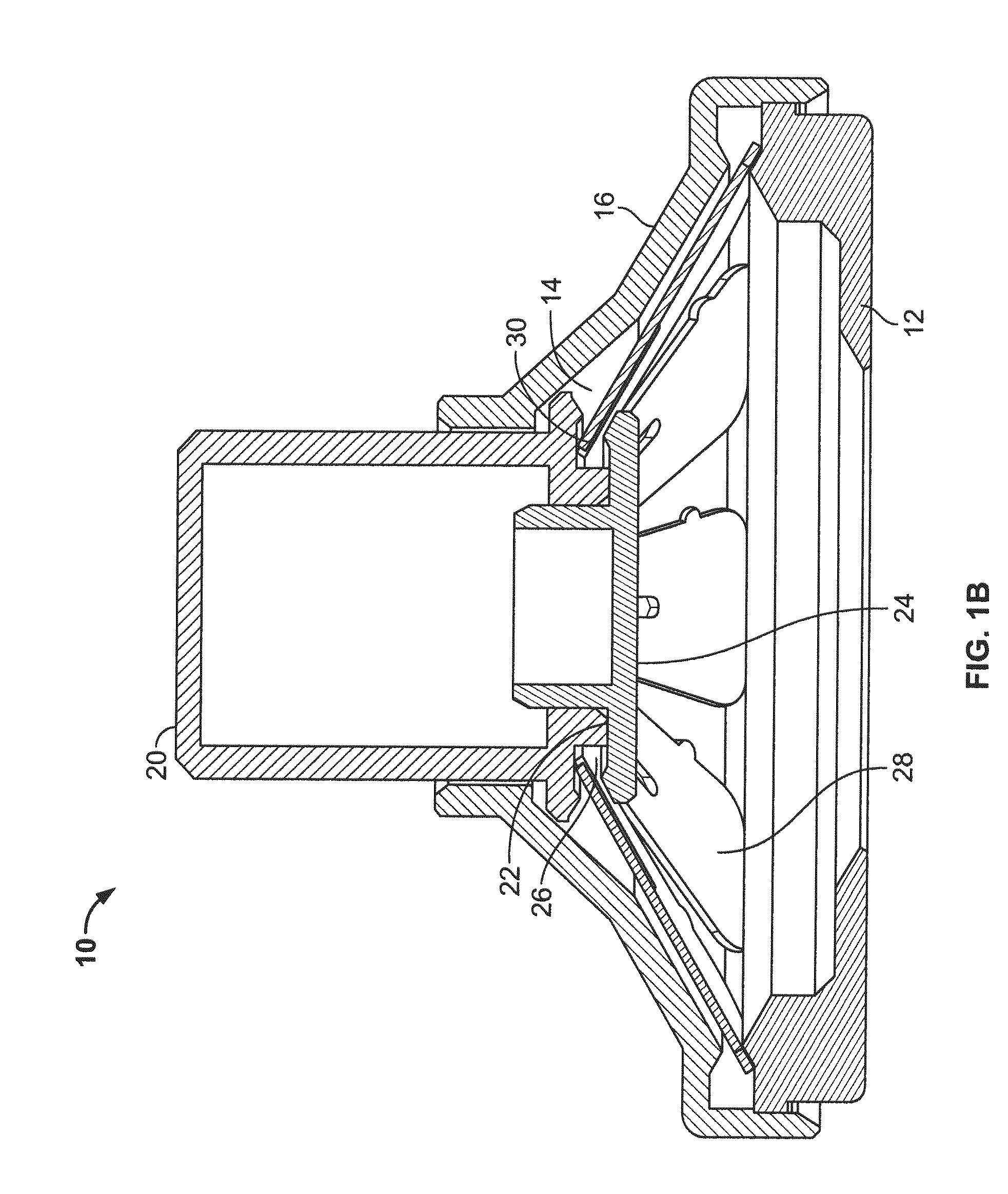Applicators for microneedles
- Summary
- Abstract
- Description
- Claims
- Application Information
AI Technical Summary
Benefits of technology
Problems solved by technology
Method used
Image
Examples
example 1
Comparative Testing of Applicators
[0116]Three slotted spring applicators designated B1, B2 and B3, similar to those depicted in FIGS. 1A-1F, were compared with an applicator designated “A” of the type depicted in FIGS. 4A-4B for skin penetration efficiency and ability to deliver hPTH(1-34) (human parathyroid hormone 1-34 fragment, also referred to as teriparatide when produced recombinantly). The applicators B1, B2 and B3 differed in the precise characteristics of the slotted spring energy-storing element (dimensions and material). Applicator B1 was 0.012 inches thick stainless steel, Applicator B2 was 0.0155 inches thick and made of 17-7 stainless steel, and Applicator B3 was 0.0155 inches thick and made of 301 stainless steel. The B1 slotted springs had somewhat longer indentations from the outside in comparison to the B2 and B3 slotted springs.
[0117]Microprojection arrays were fabricated from Dextran-70 and containing hPTH(1-34), as described in U.S. Publication No. 2008-0269685....
example 2
Preparation of a Two-Layer Microprojection Array Containing Human Parathyroid Hormone (hPTH(1-34))
[0120]A microprojection array containing a therapeutically effective amount of hPTH(1-34) (32 μgrams) was prepared for use in a Phase I clinical study as follows.
[0121]First, in describing generally the features of the microprojection array, the microprotrusions of the array can be characterized generally as comprising a DIT (drug-in-tip) layer and a “backing” layer. The DIT layer includes hPTH(1-34) in a water-soluble matrix. The sequence of hPTH(1-34) used is as follows:
(SEQ ID NO: 1)H-Ser-Val-Ser-Glu-Ile-Gln-Leu-Met-His-Asn-Leu-Gly-Lys-His-Leu-Asn-Ser-Met-Glu-Arg-Val-Glu-Trp-Leu-Arg-Lys-Lys-Leu-Gln-Asp-Val-His-Asn-Phe-OH
[0122]The tip of the microprojections is also referred to herein as the layer at the bottom-most portion of the tips or microprotrusions (i.e., proximal to the skin when placed upon the skin), also referred to herein as the “end portion” that is distal to the base of ...
example 3
Preparation of a Transdermal Delivery Device (TDS) Containing a Microprojection Array Containing Human Parathyroid Hormone (hPTH(1-34))
[0126]The final transdermal / microneedle delivery system product (sometimes abbreviated herein “TDS”) was assembled and contained the microprojection array described above in Example 2. The product was designed to deliver a systemic dose of hPTH (1-34) across the stratum corneum barrier layer of the skin using an array of microstructures. The final TDS product was formed by the integration of two components, a plunger-array assembly containing drug product and an applicator assembly, where these two items were packaged separately and integrated at the clinical site (See Example 4 below for clinical data).
[0127]The microprojection array contained in the plunger-array assembly possesses an 11 millimeter diameter of approximately 2700 microstructures arranged in a hexagonal pattern. The plunger-array assembly consists of the microprojection array mounted...
PUM
 Login to View More
Login to View More Abstract
Description
Claims
Application Information
 Login to View More
Login to View More - R&D
- Intellectual Property
- Life Sciences
- Materials
- Tech Scout
- Unparalleled Data Quality
- Higher Quality Content
- 60% Fewer Hallucinations
Browse by: Latest US Patents, China's latest patents, Technical Efficacy Thesaurus, Application Domain, Technology Topic, Popular Technical Reports.
© 2025 PatSnap. All rights reserved.Legal|Privacy policy|Modern Slavery Act Transparency Statement|Sitemap|About US| Contact US: help@patsnap.com



